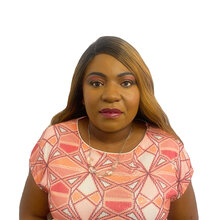Breaking barriers: the role of technology
In an era of rapid technological advancement, the power of innovation knows no boundaries. From increasing independence, to enhancing communication and accessibility, technology has helped enhanced the lives of people with disabilities. In this blog, we will explore a few technologies and ways in which they have improved the lives of people who are blind and partially blind, deaf and hard of hearing, and those with limited mobility.
Blind and partially blind

Screen Readers and Text-to-Speech Technology
For those who are blind or partially blind, one of the most significant advancements has been the development of screen readers and text-to-speech software. These technologies convert text on a screen into synthesized speech, helping people who are blind and/or partially blind to access information on computers, smartphones, and other devices. These software have become indispensable tools for navigating the digital world. They bridge the gap between the visual world and those who cannot see it, and open a wider door to education and employment.
Navigation and Wayfinding Apps
GPS-based navigation apps tailored for people who are blind or partially blind have made travelling and navigating public spaces more manageable. Apps like BlindSquare provide real-time information about nearby points of interest, street crossings, and public transportation schedules, which makes independent mobility in unfamiliar environments a reality. Also, Blind Maps, a navigation device that syncs to a user’s smart phone, provides indications on the route through a Braille-like interface.
Electronic Braille
Often accessed through Braille displays and Braille Note takers, these devices have transformed the way Braille users access written content. They convert digital text into Braille, allowing users to read and interact with information in a tactile format. Additionally, electronic Braille has allowed its users to access and enjoy the digital world without the need to be listening to a screen reader. Furthermore, it has granted people who are blind a greater access to educational fields such as computer science with a faster access to educational materials, eliminating the need to wait for printed Braille materials.
Deaf and hard of hearing

Hearing Aids and Cochlear Implants
These are probably the most impactful technological inventions for people who are deaf and/or hard of hearing. Hearing aids can significantly improve the wearer’s ability to hear sounds, speech, and other environmental cues. Wearing hearing aids is also beneficial as studies show that they can help prevent further deterioration of residual hearing. Cochlear implants are beneficial for people with severe to profound hearing loss and can provide better speech perception and understanding.
Video Relay Services (VRS)
VRS allows people who are hard of hearing or deaf to communicate with hearing individuals through sign language using video technology. This technology offers a certain number of advantages that text-based forms of relay services don’t offer, such as being able to fully express themselves through facial expressions and/or body language. A VRS call flows just like a telephone conversation where the parties can interrupt each other, which is not possible using text. It helps people who are hard of hearing or deaf to communicate effectively, and easily access important services such as healthcare.
Assistive Listening Devices (ALDs)
ALDs, such as personal amplifiers, FM systems, and loop systems, help transmit sound directly to the ears of people who are hard of hearing, which helps reduce background noise and improve clarity. Personal amplifiers amplify sound directly into the user’s ear through a microphone and earpiece while FM systems use radio technology to transmit sound from a mic worn by a speaker directly into a receiver worn by the listener. These are frequently used in classrooms or lecture halls. Hearing loop systems consist of a wire installed around the perimeter of the listening area, connected to an amplifier. Users with telecoil options in their hearing aids can connect to the loop and receive the audio signal directly through their hearing aids.
Mobility

Adaptive Input Devices
Devices like voice recognition, eye-tracking, head tracking, specialized keyboards, and switch control allow people with limited mobility to interact with computers and electronic devices. They allow them to communicate, and perform tasks that would otherwise be challenging or impossible. These tools enhance their quality of life, and help them to be more independent.
Assistive robotics and accessible transportation
Robotics technology and other assistive devices, assist individuals with limited mobility, in performing various tasks. In addition, transportation technology has evolved over the years to offer accessible options for people with limited mobility. Wheelchair-accessible vehicles equipped with ramps or lifts help users to travel and independently access essential services, employment opportunities, and recreational activities.
Home Automation and Smart Assistive Devices
Home automation and smart assistive devices help improve independence for people with limited mobility. For example, voice-activated assistants like Amazon Alexa and Google Assistant can control a certain number of home functions, such as adjusting lights, thermostats, and electronic appliances. In addition, smart home systems can integrate features such as automated door openers, environmental controls, and remote monitoring for safety and security.
Technology has certainly enhanced the quality of life for people with disabilities. From improving communication and providing greater access to information for people who are blind or partially blind, people who are deaf or hard of hearing, to enhancing mobility and promoting independence for those with limited mobility, the advancements discussed in this blog illustrate the impact of technology. As innovation continues, we anticipate further breakthroughs in the future that will surely promote greater inclusion and accessibility for all.







